If you’ve read my article on the ‘Horrible Ingredients Used in McDonald’s’ it probably won’t be a total shocker to you that there are some pretty disgusting additives in our food.
And if you’ve read what I’ve written on aspartame, it really highlights how much the FDA don’t care about what we eat, or how these food additives may affect our physical and mental health.
But you might be surprised (and disgusted) to learn just how many foods contain strange ingredients.
You might also be shocked to find out how horrifying some of these really are.
Think I’m being dramatic? Keep reading and see for yourself…
Beaver’s Anal Secretions
 I thought I’d get this list off to a good start by mentioning the possible secret ingredient in your ice cream, chewing gum and baked goods: castoreum.
I thought I’d get this list off to a good start by mentioning the possible secret ingredient in your ice cream, chewing gum and baked goods: castoreum.
Oh, it’s also known as the anal secretion that beavers use to mark their territories.
Strangely, when diluted with alcohol it smells like vanilla. Well, I’ve never actually smelt it but I’m happy to take Business Insider‘s word on this one.
Castoreum comes from the beaver’s castor sac, but because it’s close to the anal glands it often contains anal secretions and urine.
Yummy!
According to a paper published in the International Journal of Toxicology, castoreum has been used extensively in both perfumes and food for over 80 years.
Thankfully, there isn’t that much castoreum to be found in food – mainly because it’s pretty gross for us and it’s also difficult to extract from the poor beavers.
If you really want to avoid it completely, watch out for products which contain ‘natural flavorings’, as it often hides under that ambiguous term.
Silly Putty
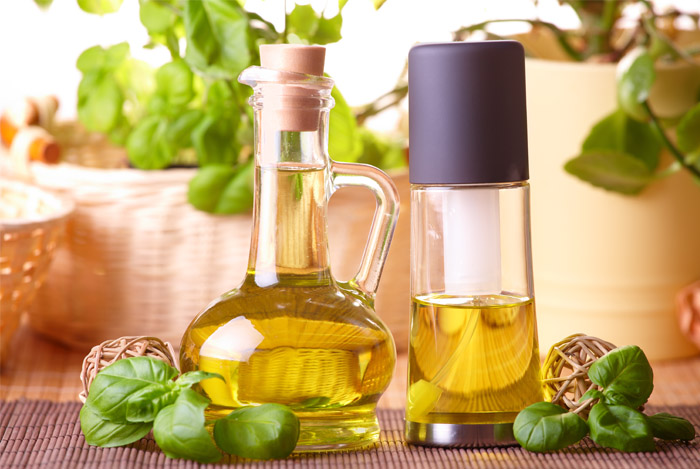 Okay silly putty isn’t exactly an ingredient in your food, but one of the main chemicals in silly putty, known as dimethylpolysiloxane.
Okay silly putty isn’t exactly an ingredient in your food, but one of the main chemicals in silly putty, known as dimethylpolysiloxane.
This unpronounceable chemical is used in silicone adhesives and lubricants, sealants, defoaming agents and breast implants, along with French fries, bread sticks, and non-stick cooking sprays, among other common food items.
Food Babe, known for her investigations into ‘crimes’ against food, claims that the FDA allows dimethylpolysiloxane to be preserved by several different chemicals that don’t have to be listed on the label, including formaldehyde.
While there haven’t been many studies on dimethylpolysiloxane, formaldehyde is known to be a highly toxic substance linked to allergies, respiratory problems, cancer and more.
Ditch the zero-calorie cooking sprays and opt for one of these healthy oils instead. It’ll be one less source of dimethylpolysiloxane you need to worry about.
Fish Bladders
Well, I hope you like fish too, because you’re probably getting some in your favorite alcoholic beverage.
This gelatin like substance, known as isinglass, is added to beer, wine, ales and other drinks to filter out cloudy yeast extracts.
Isinglass is made from cleaning and drying the air bladders of sturgeon, cod, hake and other fish.
In an email from Guinness, featured on the Huffington Post, they state that while “the sole purpose of isinglass is to help remove yeast from beer, some minor traces of isinglass may subsequently remain in the finished product”.
You probably won’t find it listed on any label though, so if you’re a vegan, vegetarian or just plain freaked out by this, make sure your wine is fish-bladder free by looking for the vegan logo.
Boiled Beetle Shells
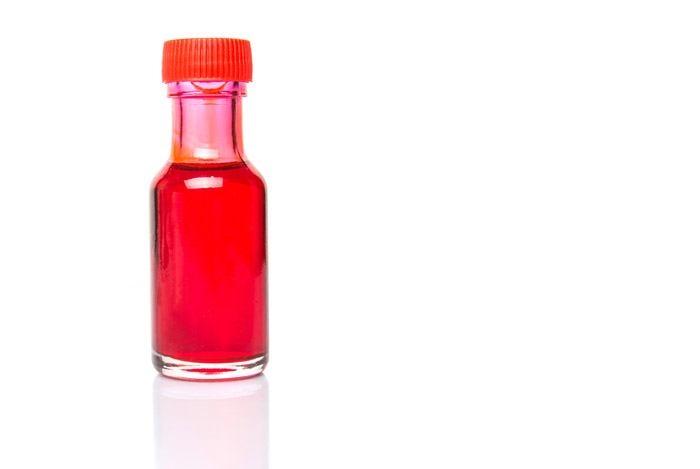 Known as carmine, cochineal, natural red 4 or E120, boiled beetle shells give a lovely red, pink or purple coloring to yogurt, candies and fruit juices.
Known as carmine, cochineal, natural red 4 or E120, boiled beetle shells give a lovely red, pink or purple coloring to yogurt, candies and fruit juices.
Female cochineal insect shells are sun-dried, crushed, and boiled in a solution of ammonia or sodium carbonate. About 70,000 insects are needed to produce a mere pound of dye.
Starbucks came under fire in 2012 for using beetle juice in their frappuccinos, prompting them to replace it with something a little less gross.
Plenty of companies still use it though – Minute Maid’s Ruby Red Grapefruit Juice, for example, contains the extract to give it its vibrant red coloring.
Thankfully, this is one additive that has to be labeled on products as the World Health Organization claims it can cause severe allergic reactions in some people.
Insect Goo
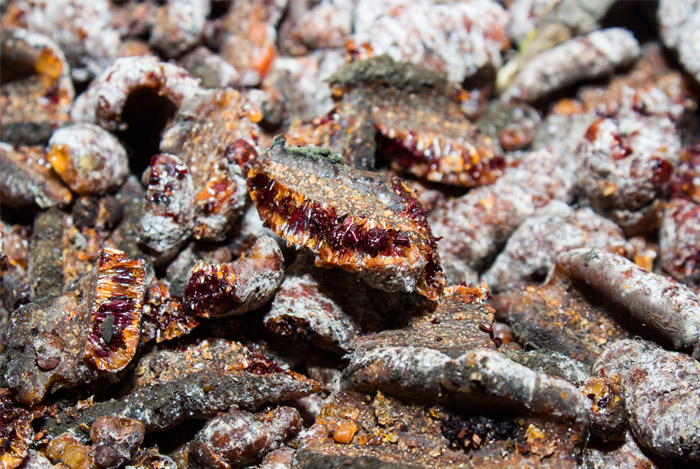 A sticky chemical, known as shellac, is secreted by female lac bugs to help them travel along the outside of trees.
A sticky chemical, known as shellac, is secreted by female lac bugs to help them travel along the outside of trees.
Shellac is extracted by scraping the goo off tree bark and leaves in Asian forests. Naturally, a heck of a lot of bugs get scraped up too.
It can be found in furniture polish, aluminum foil coating, hairspray, mascara, printing inks and pharmaceutical tablets. It’s also commonly used in hard glazed candies, chewing gum, fruit and coffee beans.
Hershey is one company that uses shellac, in their Reese’s Pieces, Milk Duds and Whoppers Malted Milk Balls.
Keep an eye out for its aliases such as:
- E904
- Confectioner’s glaze
- Confectioner’s resin
- Resinous glaze
- Candy glaze
- Pure food glaze
- Natural glaze
Sheep’s Wool Wax
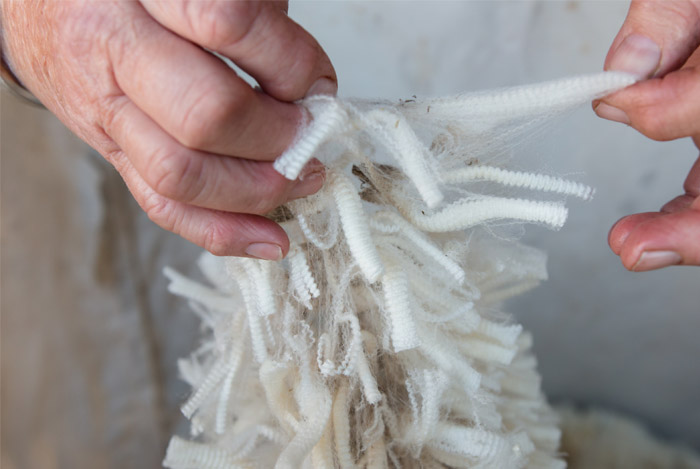 A waxy substance, known as lanolin, is taken from sheep’s wool and synthesized into vitamin D3. It’s then added to foods such as cereals and cereal bars, along with other products fortified with vitamin D.
A waxy substance, known as lanolin, is taken from sheep’s wool and synthesized into vitamin D3. It’s then added to foods such as cereals and cereal bars, along with other products fortified with vitamin D.
According to the National Institutes of Health’s Office of Dietary Supplements, both synthesized D3 and the version that comes from food act the same way in our bodies.
Of course, you could always just get your vitamin D from the sun, or foods that contain it naturally such as fish, eggs, and cheese.
Lanolin can also be used as a base for chewing gum, and is simply referred to on packging as ‘gum base’.
Human Hair
 I’m always saying that processed bread and pastries are no good for us – they’re simple carbs that cause energy crashes and contain a lot of unnecessary ingredients. One of those unnecessary ingredients might be human hair.
I’m always saying that processed bread and pastries are no good for us – they’re simple carbs that cause energy crashes and contain a lot of unnecessary ingredients. One of those unnecessary ingredients might be human hair.
But the hair hasn’t gotten into your sandwich thanks to a lapse in quality control…it’s intentionally added for its l-cysteine content to soften dough and speed up the production process.
The hair, often harvested in China, is dissolved in acid and the l-cysteine is chemically removed before being shipped to food producers.
Other leading sources of l-cysteine are duck feathers and hog hair.
I just can’t decide which is worse!
The amino acid l-cysteine is actually pretty useful for us. It may help treat some respiratory conditions, such as bronchitis and COPD. However, there are plenty of natural food sources of cysteine such as turkey, soybeans, eggs, oats, and barley.
Boiled Skin, Tendons and Ligaments
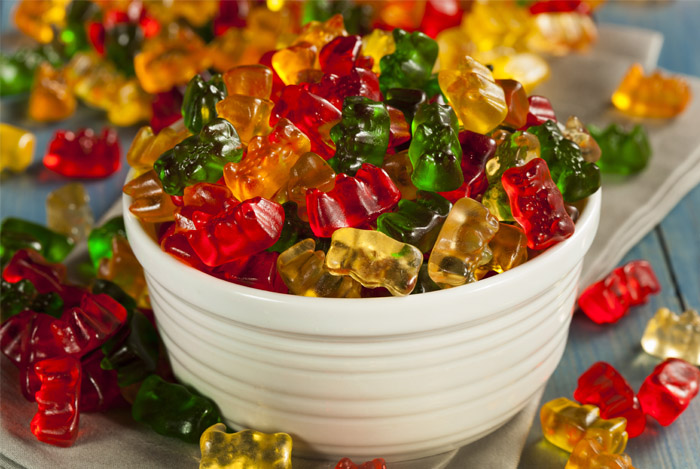 If this was written on your packet of favorite gummy bears instead of the more inoffensive ‘gelatin’ would you still eat them?
If this was written on your packet of favorite gummy bears instead of the more inoffensive ‘gelatin’ would you still eat them?
But that’s exactly what gelatin is – it’s a protein made by boiling cow or pig skin, tendons, ligaments, and bones. It just makes me sick to think about it yet it’s in more foods that you can imagine.
Check labels on vitamins, cheese, yogurt, soups, salad dressings, jams, marshmallows, jellies, fruit snacks. and canned meats.
Viruses
 Viruses – those same things we try so hard to avoid coming into contact with – are actually sometimes added to what we eat.
Viruses – those same things we try so hard to avoid coming into contact with – are actually sometimes added to what we eat.
These particular type of viruses are called bacteriophages and they help to fight bacteria on our food.
Introduced by the FDA in 2006, up to six different types of virus are frequently sprayed on ready-to-eat processed meats and poultry.
I guess it’s just another reason to stay away from processed meats and stick with organic chicken and grass fed beef that you prepare at home.
Saltwater Injections
 Compared with some other additives on this list, saltwater doesn’t sound so bad, right?
Compared with some other additives on this list, saltwater doesn’t sound so bad, right?
But it is, especially if you want a healthy heart.
Saltwater, along with chicken stock and/or seaweed extract, is injected into raw meat to enhance the flavor and increase the weight of the product before it’s sold.
This process, known as ‘plumping’, ‘enhancing’, or ‘injecting’, can mean that the chicken you buy may contain between 15% and 30% of its weight in saltwater.
Not only are you spending your hard earned dollars on watered down meat, but you’re also going to be consuming more salt than is necessary.
‘Plumped’ chicken contains up to 440 mg per 4 oz serving – that equates to almost 20% of your recommended daily intake of sodium.
If you’re over 51, are black, or have diabetes, high blood pressure or kidney disease, it actually works out at around 30% of your daily allowance. And, it’s around 500% more sodium than found naturally in untreated chicken!
Worryingly, injected chicken can still carry the words ‘natural’ or ‘all-natural’ on the label, when it’s anything but. Look for phrases like ‘contains 15% chicken broth’ or ‘contains saltwater solution’.
Hormone Disrupting Chemicals
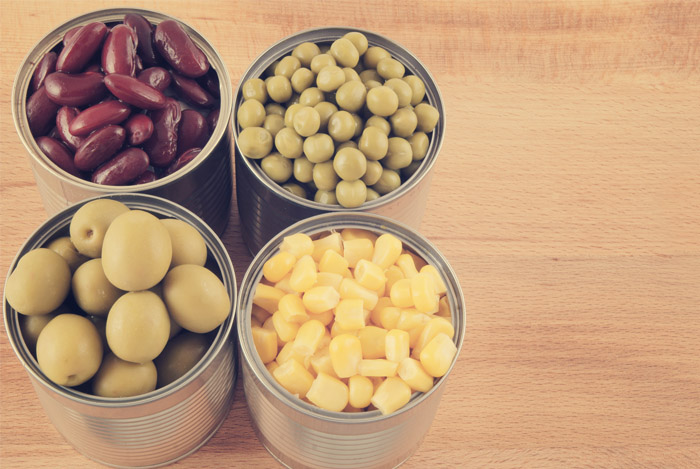 Just like you get an added side of chemicals when you cook with non-stick pans, your canned goods mean you’re ingesting something that’s not listed with the other ingredients: Bisphenol-A (BPA).
Just like you get an added side of chemicals when you cook with non-stick pans, your canned goods mean you’re ingesting something that’s not listed with the other ingredients: Bisphenol-A (BPA).
This chemical is a type of plastic that lines the can and is linked to hormonal imbalance, infertility and low libido, breast cancer, and heart disease.
I’d have to agree with Dr Mercola on this one – it’s nothing to worry about…as long as you ‘ignore most studies on it’.
Even the FDA doesn’t think it’s safe.
They changed their position from believing it’s perfectly safe to stating they have “some concerns” about possible effects of BPA on the brain, behavior, and prostate glands in fetuses, infants, and young children.
But does it actually get from the can’s lining into your food?
It would seem so.
A study in the Journal of the American Medical Association found that those who ate canned soup for five days had a 1,200% increase in their urinary levels of BPA, compared with the participants who ate fresh soup.
Look for BPA free cans, or buy products in glass jars instead.
Coal Tar
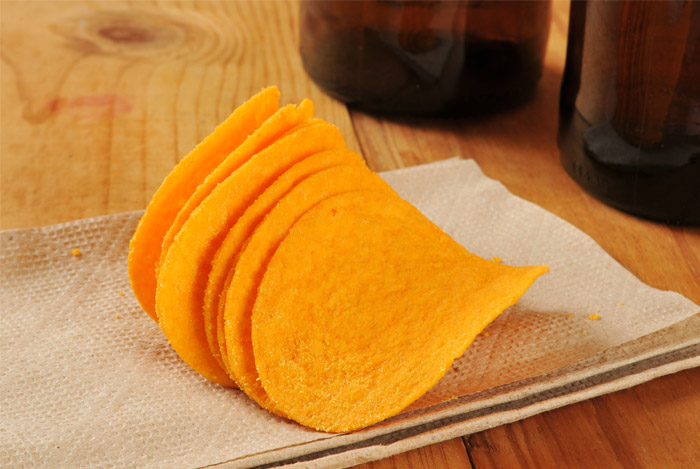 Another food coloring that comes from a gross origin – namely coal tar – is Yellow #5, also known as tartrazine or E102.
Another food coloring that comes from a gross origin – namely coal tar – is Yellow #5, also known as tartrazine or E102.
This industrial waste-derived coloring is used to give an orange or yellow hue to sodas, cheese flavored products and flavored chips.
Research funded by the British Food Standards Agency suggested that tartrazine, among other food colorings, could be linked to increased hyperactivity in some children. As a result, any product in the EU that contains it must come with a warning label.
According to Forbes.com, this isn’t the case in the US right now but Yellow #5 is undergoing further testing in the US due to its links to hyperactivity, anxiety, migraines and cancer.
Recently, Kraft was targeted by healthy eating advocates who petitioned to have the company remove the dye from their macaroni cheese product.
Kraft has promised to do so by 2016, and will use paprika, turmeric and other natural sources, which makes me wonder why they couldn’t have used these natural ingredients in the first place.
Final Thoughts
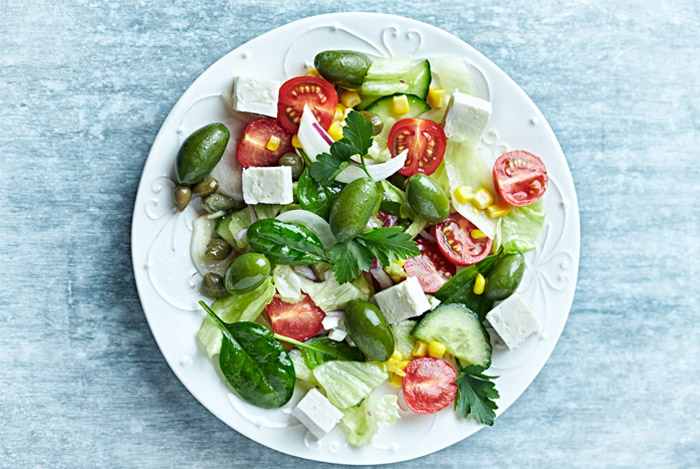 I thought that some of the ingredients used in fast food were shocking (and they are) but the huge amount of food on supermarket shelves that contains truly disgusting ingredients is kind of overwhelming.
I thought that some of the ingredients used in fast food were shocking (and they are) but the huge amount of food on supermarket shelves that contains truly disgusting ingredients is kind of overwhelming.
It just keeps reinforcing what I’ve always believed – the importance of eating high quality whole foods and steering clear of processed goods.
Unless, of course, boiled ligaments, anal secretions and women’s hair are your idea of haute cuisine.
As always I want to hear from you! What do you think of all these crazy additives in our food? Which disgusted you the most?
The post The Disgusting Additives Lurking in Your Food appeared first on Nutrition Secrets.
http://www.nutritionsecrets.com/disgusting-additives-in-food/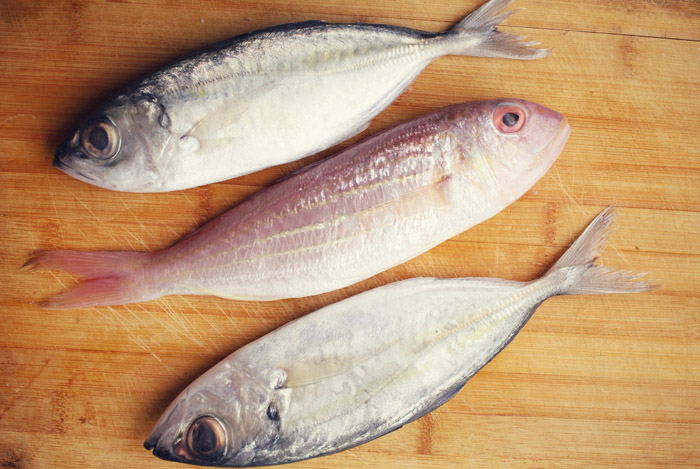 Do you like
Do you like 
No comments:
Post a Comment